Alfa Laval Scandi Brew (SB) Valve Series

 Scandi Brew (SB) Self-cleaning CO2 valve
Scandi Brew (SB) Self-cleaning CO2 valve
The Alfa Laval SB Self-Cleaning CO2 Valve is a self-regulating valve that controls the flow of carbon dioxide through tank top systems and other. This valve that ABS offers is designed for use in the brewery, food, dairy and beverage industries, this combined gas escape/supply valve makes it easy to vent or pressurize the vessel. The valve can be integrated with a SCANDI BREW® tank top system.
Related Industries: Food Processing, Beverage Processing
Safe, reliable operation
The straightforward design of this gas management valve, featuring an internal polypropylene valve body and stainless steel spring, provides long-lasting operation. By minimizing the risk of overpressure or underpressure, the valve contributes to safe, reliable operation and maximum uptime.
Hygienic self-cleaning valve
Manufactured of AISI 316L stainless steel, the valve features a special drilled opening in the valve body, which effectively cleans all valve parts during Cleaning-in-Place (CIP). This minimizes the risk of contamination. Alfa Laval 3.1 traceability certification is also available upon request.
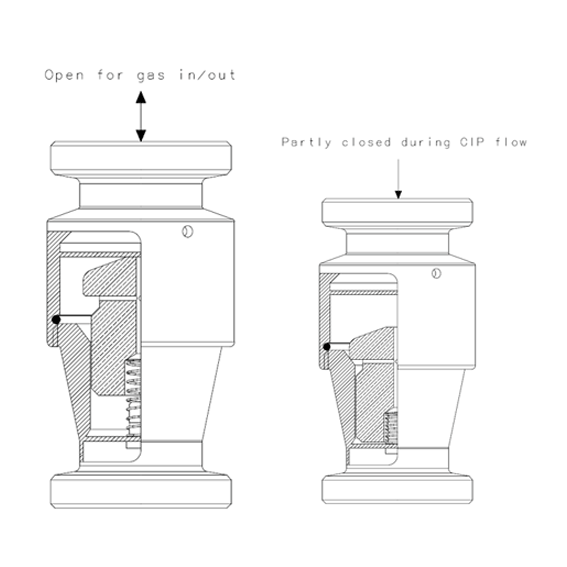
Construction
The valve consists of an AISI 316L stainless steel valve housing, spring, plug and EPDM seal. The valve housing consists of two components held together by a threaded connection. Inside there is a valve body made of polypropylene and a stainless steel spring to keep the body in open position.
The valve is typically positioned as an integrated part of the gas/CIP pipe at the top plate. It can be mounted at an angle of 45° (maximum) to the ideal vertical position. It can also be integrated with a SCANDI BREW® tank top system.
Operating principle
The stainless steel spring forces the valve body open, enabling the full flow of gas to pass through the valve in both directions. To force the valve body into closed position, CIP fluid flows in a countercurrent direction against the spring. Due to the force of the liquid, the valve closes. A special drilled opening in the valve body ensures hygienic cleaning of all valve parts.
Concept
Combined gas escape/supply valve to be used in tank top systems
and other applications for easy gas flow, allowing venting as well as
pressurizing of vessel through the valve. Partly-closed for CIP liquid
to be cleanable and self-draining.
Working Principle
The internal polypropylene valve body is force opened by a stainless
steel spring, thus allowing full gas capacity through the valve in both
directions. By introducing CIP flow against the spring force, the internal
valve body will be moved to a closed position.
The CIP liquid will close the valve but a special drilling of the valve
body ensures cleaning of all valve parts. Depending on valve size, this
CIP flow is approx. 800-900 l/h.
Standard Design
The valve housing consists of two parts held together by a threaded
connection. Inside there is a valve body and a spring to keep the body
in open position. The valve body is drilled to ensure internal cleaning of
the valve during CIP.
The valve is typically positioned as an integrated part of the
gas/CIP-pipe at the top plate. It can be mounted at an angle of
maximum 45° to the ideal vertical position.
TECHNICAL DATA
Maximum gas flow (both directions) at max. 0.1 bar ?P
Size …………….. Flow (m³/h)
1”/DN25 . . . . . . . . . . . . . . . 25
1½”/DN40 . . . . . . . . . . . . . 50
2”/DN50 . . . . . . . . . . . . . . . 150
2½”/DN65 . . . . . . . . . . . . . 250
3”/DN80 . . . . . . . . . . . . . . . 450
4”/DN100 . . . . . . . . . . . . . . 600
PHYSICAL DATA
Materials
Steel parts: . . . . . . . . . . . . .EN 1.4404 (AISI 316L) with 3.1 cert.
Product wetted seals: . . . . . .EPDM
Product wetted polymers: . . . .Polypropelen
Connections
Weld end acc. DIN 11850
Weld end acc. ISO 2037
Unions DIN 11851
Hygienic – Unions DIN 11853
Clamps ferrule ISO 2852
 Scandi Brew (SB) Pressure Relief Valve
Scandi Brew (SB) Pressure Relief Valve
To prevent damage to the tank and help ensure safe operations, ABS offers the Alfa Laval SB Pressure Relief Valve protects a pressurized tank during an overpressure event. It is designed for hygienic processes in the brewery, dairy, food and beverage industries. The valve can be integrated with a SCANDI BREW® tank top system.
For other relief valve from Alfa Laval, click here.
For other safety valve from Alfa Laval, click here.
Related Industries:
Processed Foods, Dairy, Beverages, Home & Personal Care
Effective pressure relief
This pressure relief valve removes excess liquid that creates overpressure in the tank due to overfilling. When pressure in the tank exceeds a preset value, the pressure relief valve opens to vent fluid in the event of liquid overfilling, and closes when the tank pressure has returned to a safe level.
Easy-to-clean hygienic design
Few moving parts and smooth, crevice-free stainless steel surfaces make this valve easy to clean. When the valve is in closed position, it is cleaned as part of the routine Cleaning-in-Place (CIP) cycle. For thorough cleaning of the valve seat, an optional pneumatic force opener and a splash guard is available.
Construction
The Alfa Laval SB Pressure Relief Valve is a dead weight safety valve. It is compliant with PED 97/23/EC, EN 4126-1 and EN 764-7 and is available in two versions:
- Integrated with a SCANDI BREW® tank top system
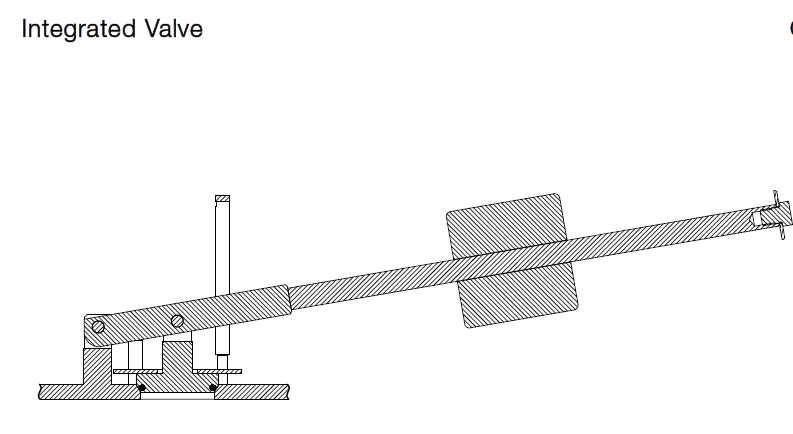
- Mounted on its own counter flange
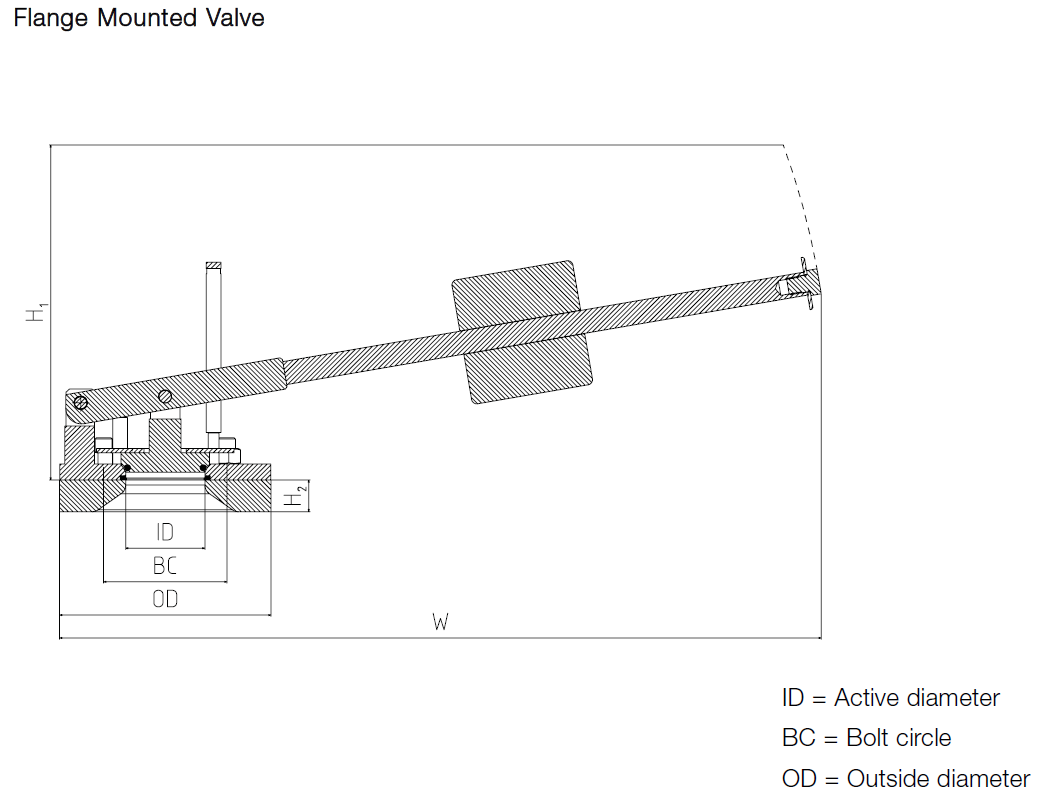
Operating principle
The pressure relief valve is delivered with the counterweight set and locked at the preset pressure that meets the customer’s requirements for opening pressure. When pressure in the tank exceeds the preset opening value, the valve relieves the excess pressure.
The preset opening pressure must be set at a value that is above the tank working pressure: 0.1 bar above for working pressures <1 bar, and 10% above for working pressures ? 1 bar. The valve should be seated horizontally. A maximum inclination of 10° is acceptable, but the lever arm must then point inward toward the centre of the cylindroconical tank top.
Cleaning-in-Place (CIP)
The valve is cleaned in closed position by the tank cleaning head. However, this does not include cleaning of the valve seat. To include the valve seat as an integral part of the cleaning cycle, an optional pneumatic force opener and optional splash guard are available.
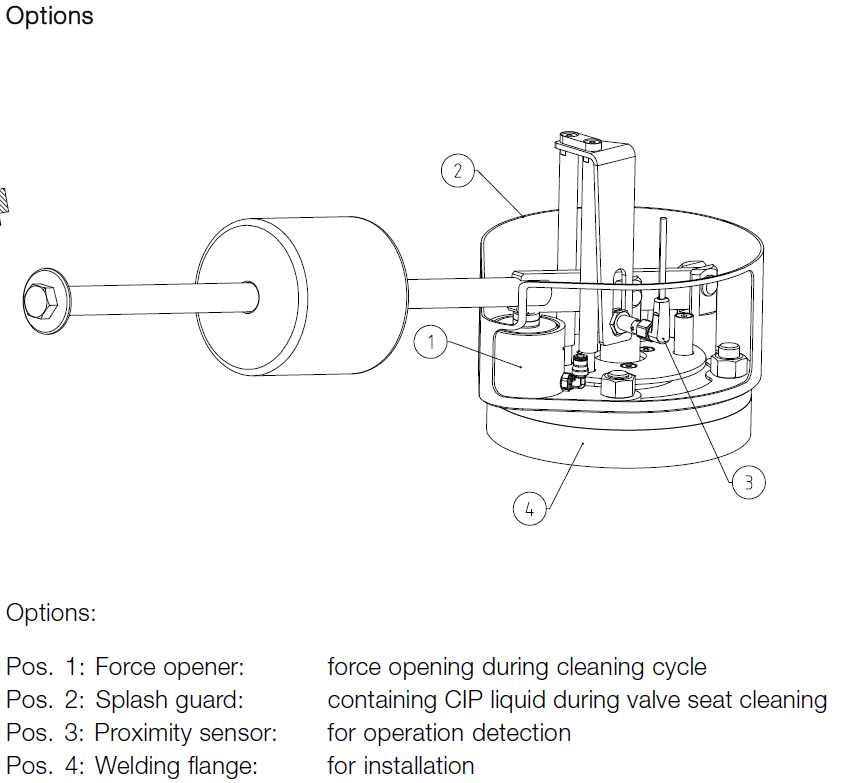
Concept
The Pressure Relief Valve is used for minimizing the risk of damage
to tanks due to liquid overfilling.
Working Principle
The Pressure Relief Valve is delivered with counter weight set and
locked to suit customer requirements regarding opening pressure.
When pressure in the tank exceeds the preset opening value, the valve
relieves the excess pressure.
Standard Design
The Pressure Relief Valve is available in two versions:
• Integrated in a SCANDI BREW® tank top system
• Mounted on its own welding flange
Compliance to EN 4126-1
Compliance to EN 764-7
Compliance Pressure Equipment Directive 2014/68/EU of the
European Community, Fluida Group II
The advantages of an integrated Pressure Relief Valve are lower initial
costs, superior hygiene and smaller area required for the valve. The
size and setting of the Pressure Relief Valve is based on the tank
design data and process requirements.
TECHNICAL DATA
Nominal size Set Pressure Range
75mm. . . . . . . . . . . . . . . . . . . . . . 0.2 – 3.5 bar
100mm . . . . . . . . . . . . . . . . . . . . 0.2 – 2.5 bar
150mm . . . . . . . . . . . . . . . . . . . . 0.4 – 1.5 bar
PHYSICAL DATA
Materials
Product wetted steel parts: . . .EN 1.4404 (AISI 316L) with 3.1 cert.
Product wetted steel surfaces: .Surface roughness Ra<0.8 ?m
Product wetted seals: . . . . . .EPDM
Cleaning In Place (CIP)
The Pressure Relief Valve is cleaned in closed position by the tank cleaning head, but this will not include the valve seating. To include the valve seating
in the cleaning cycle, there is the option to equip the valve with a pneum. force opener and a splash guard.
 Scandi Brew (SB) Anti Vacuum Valve
Scandi Brew (SB) Anti Vacuum Valve
Integrated in a SCANDI BREW® tank top system, the Alfa Laval SB Anti Vacuum Valve is a compact safety valve that minimizes the risk of implosion of tanks when a vacuum condition arises. These conditions occur while filling or emptying the vessel of liquid, cool rinsing after hot-cleaning or caustic cleaning in a CO2 atmosphere. Designed for use in the brewery, dairy, food and beverage industries, it helps optimize the safety, reliability and performance of critical processes and maximize uptime.
For other safety valve from Alfa Laval, click here.
Related Industries:
Food and Beverage Processings
Low initial cost of investment
With a durable and robust design, the SB Anti Vacuum Valve protects tanks from collapse due to internal vacuum conditions. Its low initial cost of investment provides return on investment over the long term as a result of operational reliability and enhanced service life, combined with reduced product loss, greater process safety and improved hygiene.
Compact valve design
Compact and robust, the hygienic SB Anti Vacuum Valve easily fits onto the top of any closed tank. The valve size and setting is based on the tank vacuum rating, maximum allowable emptying speed, cleaning procedure and process requirements.
Superior valve hygiene
Engineered to provide excellent hygiene and cleanability, the SB Anti Vacuum Valve features high-quality stainless steel with a surface finish of Ra ? 0.8?m. Alfa Laval seal technology also offers greater thermal stability, better chemical resistance and improved tensile strength. This highly reliable valve conforms to PED 97/23/EC requirements. Alfa Laval3.1 traceability certification is also available upon request.
Product benefits
- Low initial cost of investment
- Compact design
- Superior hygiene
- Easy installation
Construction
The Alfa Laval SB Anti Vacuum Valve is a flange mounted safety valve that an integral part of a SCANDI BREW® tank top system. All product wetted steel parts are made of AISI 316L stainless steel with a surface roughness of Ra<0.8 ?m; all other steel parts are made of AISI 304L stainless steel. All product wetted seals are made of EPDM and all product wetted polymers are made of PEEK.
It is available in two versions:
- Integrated in a SCANDI BREW® tank top system
- Mounted on its own counter flange
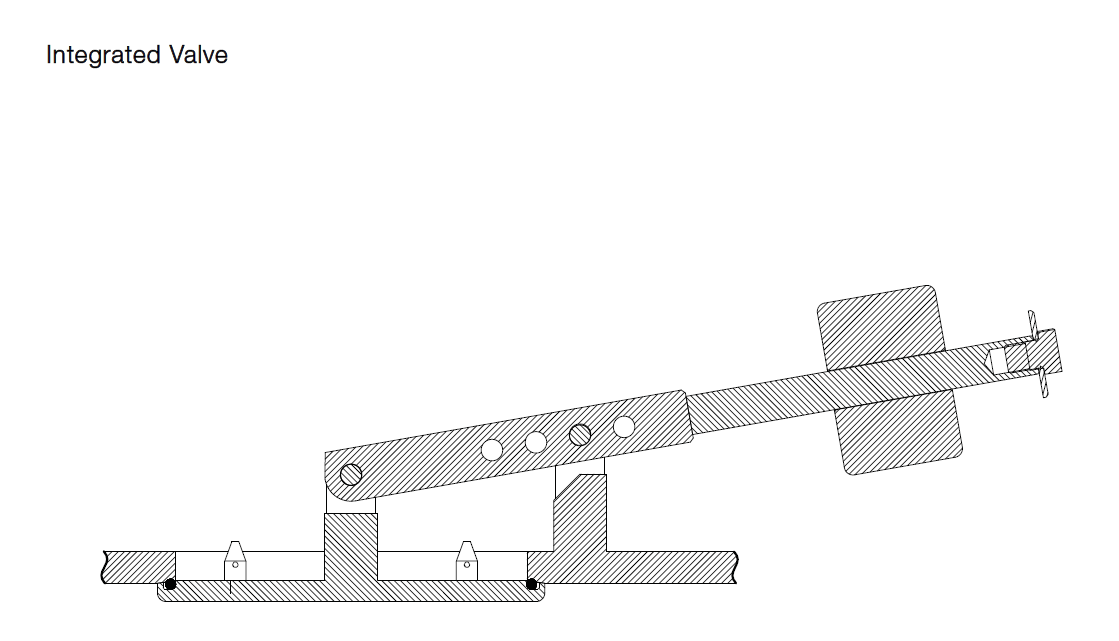
The valve should be seated horizontally. A maximum inclination of 10° is acceptable, but the lever arm must then point in to the center of the cylindroconical tank top.
Operating principle
The SB Anti Vacuum Valve is delivered with counterweight set and locked for an individual opening vacuum to suit the tank design data. When a vacuum in the tank is lower than the preset opening value, the valve opens and lets in atmospheric air.
Cleaning-in-Place (CIP)
The Anti Vacuum Valve is cleaned, when closed, by the tank cleaning head. However, this does not include cleaning of the valve seat. There are two options available for CIP of the valve seat (see Options below).
It is very important to note that if the cleaning procedure includes hot cleaning, the valve should be dimensioned with the purpose of preventing implosion from the vacuum that appears when flushing with cold water.
Options
These two options are available for Cleaning-In-Place (CIP) of the valve seat.
CIP Kit 1: Force opener and splash guard
The valve is forced opened during tank CIP. The cleaning of valve seat is dependent on cleaning jets from the tank cleaning head. Any CIP liquid that escapes the tank is contained by the splash guard and drains back into the tank.
CIP Kit 2: Force opener, splash guard, CIP nozzle and CIP closing valve
The valve is forced opened during tank CIP. The cleaning of valve seat is performed by the CIP nozzle. All CIP liquid from the CIP nozzle is contained by the splash guard and drains back into the tank.
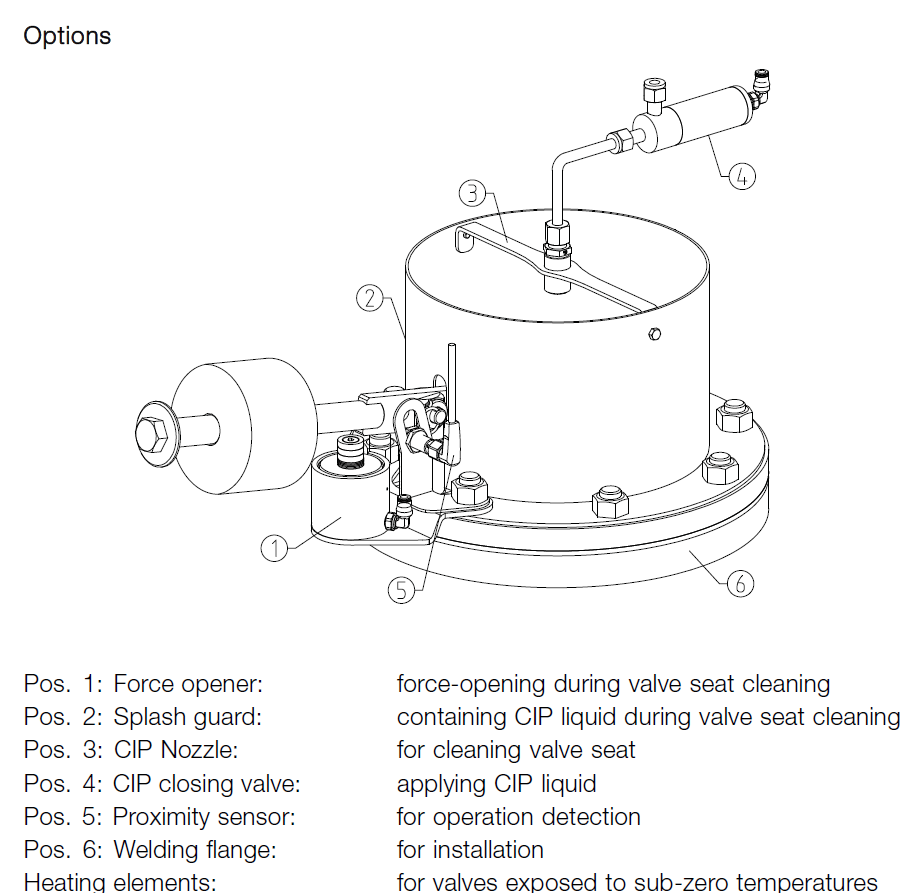
Concept
The Anti Vacuum Valve is used for minimizing the risk of implosion of
tanks exposed to vacuum e.g. during emptying, cool-rinsing after
hot-cleaning or caustic cleaning in a CO2 atmosphere. The Anti
Vacuum Valve can be applied on any closed tank.
Working principle
The Anti Vacuum Valve is delivered with counter weight set and locked
for an individual opening vacuum to suit the tank design data. When a
vacuum in the tank is lower than the preset opening value, the valve
opens and lets in atmospheric air.
TECHNICAL DATA
| Nominal Size | Opening Pressure range | Allowable Pressure PS |
| 100mm | 50-500 mmH2O | 6 bar |
| 150mm | 25-500 mmH2O | 6 bar |
| 200mm | 25-500 mmH2O | 6 bar |
| 250mm | 25-300 mmH2O | 4 bar |
| 300mm | 25-500 mmH2O | 4 bar |
| 400mm | 25-100 mmH2O | 4 bar |
PHYSICAL DATA
Materials
Product wetted steel parts: EN 1.4404 (AISI 316L) with 3.1 cert.
Product wetted steel surfaces: Surface roughness Ra<0.8 µm
Product wetted seals: EPDM
Product wetted polymers: PEEK
Other steel parts: EN 1.4307 (AISI 304L)
Standard design
The Anti Vacuum Valve is available in two versions:
• Integrated in a SCANDI BREW® tank top system
• Mounted on its own counter flange
Compliance Pressure Equipment Directive 2014/68/EU of the
European Community, Fluida Group II
The advantages of an integrated Anti Vacuum Valve are lower initial
costs, superior hygiene and smaller area required for seat valve.
The size and setting of the Anti Vacuum Valve is based on the tank
vacuum rating, maximum emptying speed, cleaning procedure and
process requirements. The Anti Vacuum Valve is produced in a
hygienic and robust design. Heating elements are available for valves
exposed to sub-zero temperatures.
It is very important to note that if the cleaning procedure includes
hot-cleaning, the valve should be dimensioned with the purpose of
preventing implosion from the vacuum that appears when flushing
with cold water.
The Anti Vacuum Valve should be seated horizontally. An inclination
of max. 5° is acceptable but the lever arm must then point in to the
center of the cylindro-conical tank top.
Cleaning In Place (CIP)
The Anti Vacuum Valve is cleaned, when closed, by the tank cleaning
head, but this will not include the valve seating.
To include the valve seating in the cleaning cycle, there are two options:
CIP Kit 1 – Force opener; splash guard
The valve is force-opened during tank CIP. The cleaning of valve seat
is dependent on cleaning jets from the tank cleaning head. Any CIP
liquid escaping the tank is contained by the splash guard and drains
back in to the tank.
CIP Kit 2- Force opener; splash guard; CIP nozzle; CIP closing
valve
The valve is force-opened during tank CIP. The cleaning of valve seat
is performed by the CIP nozzle. All CIP liquid from the CIP nozzle is
contained by the splash guard and drains back in to the tank.
NOTE: Applying any of above CIP options provides that the tank is
pressureless at the moment of force opening the Anti Vacuum Valve.
Options
Pos. 1: Force opener: force-opening during valve seat cleaning
Pos. 2: Splash guard: containing CIP liquid during valve seat cleaning
Pos. 3: CIP Nozzle: for cleaning valve seat
Pos. 4: CIP closing valve: applying CIP liquid
Pos. 5: Proximity sensor: for operation detection
Pos. 6: Welding flange: for installation
Heating elements: for valves exposed to sub-zero temperatures
Concept
The membrane sample valve is used for sampling from tanks and pipework under sterile conditions. The valve is sterilized in place with alcohol or steam. Membrane sealing directly against the product ensures representative sampling, giving repeatable results safe from secondary contamination.
Working Principle
Before opening the valve, the closing cap should be placed on the upper hose piece. When the handle is placed in a horizontal position, the required flow through the lower outlet is obtained. When the handle is back in a vertical position, the valve is closed, and the handle can be removed if required.
Technical Data
Product pressure: Max. 6 bar as standard (10 bar available on request)
Valve body: 1.4404 (AISI 316L), Membrane: Silicone (EPDM on request)
SB Membrane Sample Valve Application
High sampling reliability
The SB Membrane Sample Valve meets the requirements for high-quality product extraction in various hygienic processes with minimal risk of contamination. High accuracy, exceptional repeatability, and excellent reliability are hallmarks of the valve.
Versatile hygienic design
Made of a single piece of stainless steel, the valve body features smooth, crevice-free surfaces. Because no welding is required, the risk of pore formation and cracking in the welds and subsequent risk of bacterial build-up is eliminated. This highly versatile hygienic valve is available in several different designs to ensure sample reliability and safety for a broad range of applications.
Enhanced valve cleanability
Designed to help ensure effective sterilization before and after each sample, these valves are sterilized in place with alcohol or steam. This helps ensure a truly representative sample every time.
- Low upfront investment costs
- Superior hygiene
- Compact size
Construction
The valve consists of a valve body, actuator, and membrane seal, which is placed on the stem of the actuator and works as a stretchable plug. The valve is available in three different actuator designs:
- Manual – For manual activation
- Manual + Micro Port – For manual activation or sampling using a hypodermic needle to penetrate the membrane for sample taking.
- Manual + Pneumatic – For manual or pneumatic activation when the valve is connected to pipes for automatic sampling. The valve is then supplied with pipe outlet connections.
Operating Principle
To take a sample, rotate the handle in a clockwise direction to open the valve. This retracts the membrane allowing the liquid to pass through the valve into the sample container. To close the valve for sterilization before and after taking each sample, rotate the handle in a counter-clockwise direction to ensure the channel between the valve ports is open for sterilization.
 Scandi Brew (SB) Pressure Exhaust Valve
Scandi Brew (SB) Pressure Exhaust Valve
The Alfa Laval SB Pressure Exhaust Valve is a regulating valve that automatically reduces the working pressure in brewery, food, dairy and beverage process tanks as the pressure in the vessel increases. The valve is an integral part of SCANDI BREW® tank top system.
For other regulating valve from Alfa Laval, click here.
Related Industries:
Food and Beverage Processings
Safe, effective pressure regulation
Easily integrated into a central process control system, this pneumatic valve ensures safe, reliable and hygienic performance by releasing pressure in the process tank when it exceeds the set point pressure. To ensure safe pressure regulations at all times, the set point pressure can easily be adjusted manually or from a remote location that is connected to the central control system.
Hygienic, easy-to-clean design
To meet exceptionally high levels of hygiene, this regulating valve features simple, straightforward design. Smooth surfaces and food-grade finishes contribute to superior hygiene and cleanability. For fast, effective cleaning, a cleaning nozzle is supplied for inline cleaning of the valve at the same time as Cleaning-in-Place of the vent/recovery mains takes place. Alternatively, an optional CIP supply valve is available to connect a CIP system directly to the valve housing.
Flexible valve mounting
With flexible mounting positions, the valve can be positioned directly on tank top, as part of a tank top system or elsewhere along the pipework as long as there is proper drainage from the valve housing.
Construction
The Alfa Laval SB Pressure Exhaust Valve consists of an AISI 316L stainless steel body, EPDM seals, and fittings for 4/6 mm nylon hoses for set point pressure and force opening. A cleaning nozzle and closing plug for the Cleaning-in-Place (CIP) inlet are also supplied. An optional pneumatic cleaning nozzle is available to replace the closing plug (see Options below). The valve can be used as an integral part of SCANDI BREW® tank top system.
Operating principle
The valve is operated by means of the set point pressure being applied to the top of a membrane set. The pressure regulation will be identical to the set point pressure. The set point pressure is either reduced to the required pressure by means of a manual precision regulator or an IP converter controlled by a PLC.
When the tank pressure exceeds the set point pressure, the valve will open and release pressure through the valve side branch for atmospheric discharge or collection. To ensure correct working conditions, there should be no backpressure after the vent port.
After force-opening of valve by means of an air signal to the lower part of the membrane set, the valve can be effectively cleaned either by using the cleaning nozzle for inline cleaning of the valve at the same time as CIP of the vent/recovery mains takes place, or by using an optional CIP supply valve to connect a Cleaning-in-Place system to the valve housing.
Option
- CIP supply valve
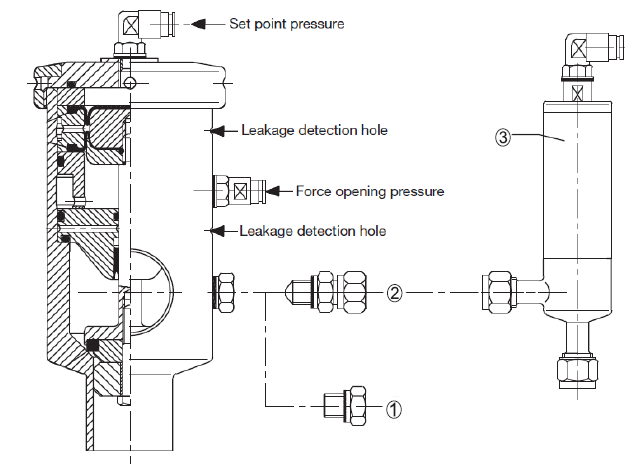
Pos. 1: Cleaning nozzle
Pos. 2: Closing plug
Pos. 3: Optional pneumatic CIP supply valve
Pos. 1 and 2 included with valve
